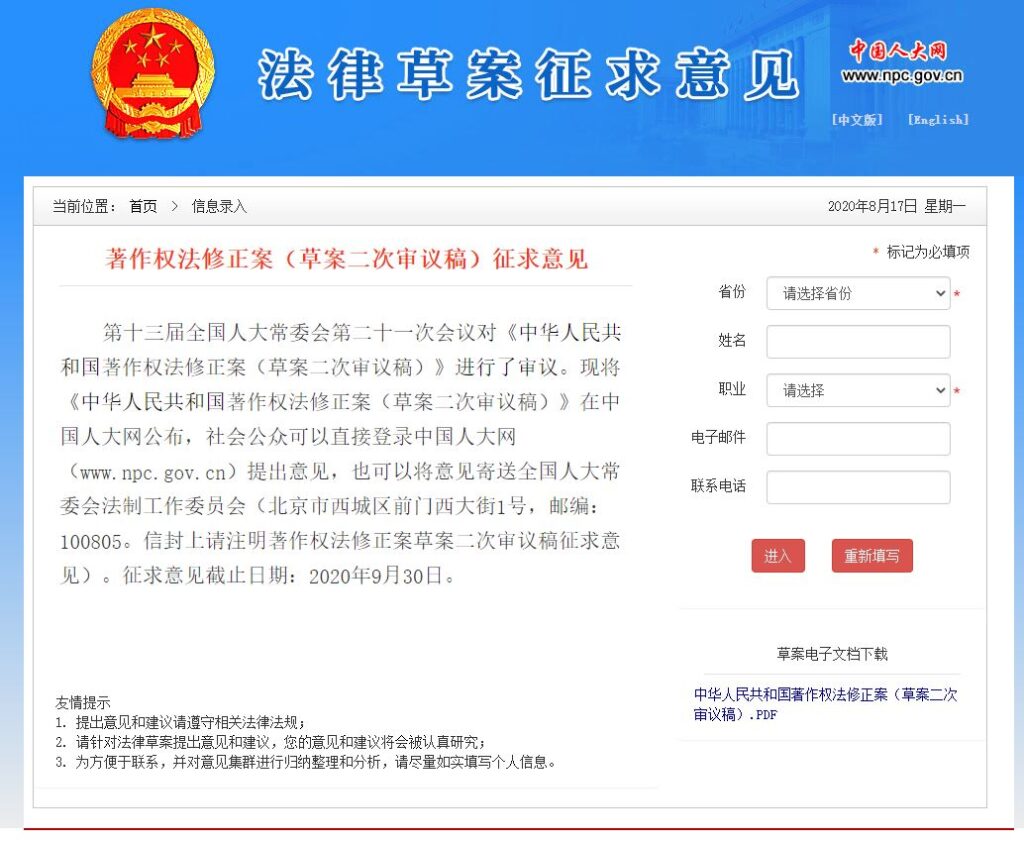China’s National People’s Congress Releases Second Draft of Amended Copyright Law
On August 17, 2020, China’s National People’s Congress released the Amendments to the Copyright Law (Second Deliberation Draft) (中华人民共和国著作权法修正案(草案二次审议稿)) for comment. The deadline for comments is September 30, 2020.
Some significant changes to the copyright law draft between first and second versions. Article 4 has been further amended to remove a clause hindering “normal distribution of works.” Instead, this will be left to the existing Anti Unfair Competition Law (中华人民共和国反不正当竞争法). Similarly, Article 50 regarding penalties for same has been deleted. This clause caused some controversy for being overly broad potentially leading to numerous complaints against copyright owners unwilling to license works at what potential licensees deem fair.
Article 10 has been amended to clarify that the right of reproduction includes digitizing – that is, converting from an analog format to a digital format (e.g., paper photographs to digital photographs).
Article 16 has been amended to explicitly require payment for derivative works although permission of the copyright owner to make a derivative work was required in the first draft.
Article 53 (previously 52) raised the minimum revenue required to impose fines 100-fold from 50,000 RMB to 5 million RMB. “If the amount of illegal business more than five million yuan and may impose a fine of more than five times the illegal business turnover.” Otherwise, a fine of up to 250,000 RMB may be imposed.
Article 53 (now 54) eliminates the consideration of a multiple of a licensing fee for determining potential damages. Instead, damages can be determined based on licensing fees (but not a multiple thereof).
Article 56 provides explicitly for preliminary injunctions as well as evidence preservation.
More details can found here. Comments can be submitted here.
Back to All Resources

